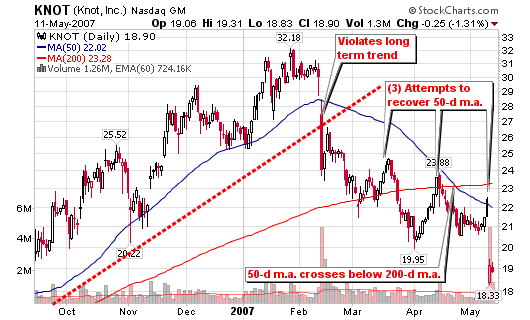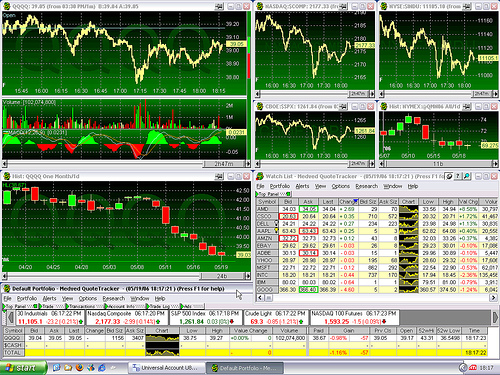IBD, otherwise know as Investor’s Business Daily, has compiled a basic set of rules for success. They claim that your investment results should improve materially if you carefully follow these 20 rules (rules in bold lettering).
I have added my “two cents” after each rule based on my experiences as a trader. I can tell you that these rules helped establish my foundation towards successful investing.
New readers can try the paper for free for two or four weeks depending on a print or electronic version: Free Trial
I now use the eIBD electronic version so I can save them but I started with the print version (both are great for their own reasons).
1. Consider buying stocks with each of the last three years’ earnings up 25%+, return on equity of 17%+ and recent earnings and sales accelerating.
CP: This is an excellent rule to follow as it will filter most of the poorer performing stocks from your initial screens. Many of my fundamental screens contain these parameters although I do eliminate or loosen the ROE parameters at times.
2. Recent quarterly earnings and sales should be up 25% or more.
CP: Love this rule as earnings results do have a direct relationship to share price
3. Avoid cheap stocks. Buy higher quality stocks selling $15 a share and higher.
CP: I follow this rule about 95% of the time. It’s a must for novice investors as much of the market’s garbage is priced below $15 per share. However, I will occasionally trade a stock below $15 per share if the risk-to-reward ratio warrants the position.
4. Learn how to use charts to see sound bases and exact buy points.
CP: Learning technical analysis is a must to become a successful trader. Thousands of methods exist so discover the few that fit your trading style. Read through this blog to become familiar with my technical methods.
5. Cut every loss when it’s 8% below your cost. Make no exceptions so you can always avoid huge, damaging losses. Never average down in price.
CP: First – NEVER average down in price, NEVER! Second, always cut your losers based on your position sizing calculation which should have a direct relationship to your risk-to-reward setup. Don’t allow losses to grow larger than 8-10%.
6. Follow selling rules on when to sell and take profit on the way up.
CP: Always sell when a rule is violated. Examples could be a price falling back below a specific moving average, a specific retracement from new highs or a trailing stop.
7. Buy when market indexes are in an uptrend. Reduce investments and raise cash when general market indexes show five or more days of volume distribution.
CP: Follow the trend! Whether it is up or down, trade accordingly!
8. Read IBD’s Investor’s Corner and Big Picture columns to learn how to recognize important tops and bottoms in market indexes.
CP: I do recommend these sections of the newspaper but you can also formulate your own methods for signaling market tops and bottoms (I like to monitor the NH-NL ratio and my own index of 20-30 of the market’s leading stocks).
9. Buy stocks with a Composite Rating of 90 or more and a Relative Price Strength Rating of 85 or higher in the IBD SmartSelect® Corporate Ratings.
CP: This is a great rule for strong bull markets but the parameters must be loosened in flat or weak markets. I set my fundamental screeners to a minimum rating of 70 for both EPS and RS. I rarely use the smart select ratings from IBD.
10. Pick companies with management ownership of stock.
CP: I don’t care about this rule and don’t follow it in my research. It can help but I have never based a trading decision off of this rule.




Connect with Me